 Arguments
Arguments
 Software
Software
 Resources
Comments
Resources
Comments
 Translations
Translations
 About
Donate
About
Donate


Latest Posts
- New research from last week 50/2012
- 2012 SkS Weekly Digest #50
- More ice loss through snowfall on Antarctica
- Thawing of Permafrost Expected to Cause Significant Additional Global Warming, Not yet Accounted for in Climate Predictions
- Doha Climate Summit Ends With No New CO2 Cuts or Funding
- IPCC Draft Report Leaked, Shows Global Warming is NOT Due to the Sun
- This is Global Warming - A Lesson for Monckton and Co.
- 2012 SkS Bi-Weekly News Roundup #9
- Participate in Citizen Science with the new SkS BOINC team
- AGU 2012 - Solving the Climate Problem
- New research from last week 49/2012
- 2012 SkS Bi-Weekly News Roundup #8
- 2012 SkS Weekly Digest #49
- Newest Yale Forum Video: A ‘Play-by-Play’ on Sandy with Kerry Emanuel
- Subcap Methane Feedbacks. Part 2: Quantifying fossil methane seepage in Alaska and the Arctic
- Past 150,000 Years of Sea Level History Suggests High Rates of Future Sea Level Rise
- DIY climate science: The Instrumental Temperature Record
- 2012 SkS Bi-Weekly News Roundup #7
- Weighing change in Antarctica
- The Greenhouse Gas Effect All-Star Fan Club
- New research from last week 48/2012
- 2012 SkS Weekly Digest #48
- 2012: Record Arctic Sea Ice Melt, Multiple Extremes and High Temperatures
- 2012 SkS Bi-Weekly News Roundup #6
- The Latest Pre-Bunked Denialist Letter in Lieu of Real Science
- SkS at the AGU 2012 Fall Meeting
- Rahmstorf et al. Validate IPCC Temperature Projections, Find Sea Level Rise Underestimated
- 2012 SkS Bi-Weekly News Roundup #5
- Subcap Methane Feedbacks, Part 1: Fossil methane seepage in Alaska
- Climate of Doubt Strategy #2: Exaggerate Uncertainty
Explaining climate change science & rebutting global warming misinformation
Scientific skepticism is healthy. Scientists should always challenge themselves to improve their understanding. Yet this isn't what happens with climate change denial. Skeptics vigorously criticise any evidence that supports man-made global warming and yet embrace any argument, op-ed, blog or study that purports to refute global warming. This website gets skeptical about global warming skepticism. Do their arguments have any scientific basis? What does the peer reviewed scientific literature say?
New research from last week 50/2012
Posted on 17 December 2012 by Ari Jokimäki
Note: These weekly new research posts will not be published anymore after the end of this year. New research will be communicated in some different format in the future. We are working on it in Skeptical Science author community. I'm not yet sure how this might affect my output in my Facebook and Twitter pages, but it is probable that number of papers communicated through those channels will drop.

2012 SkS Weekly Digest #50
Posted on 17 December 2012 by John Hartz, dana1981
SkS goes to Washington
As reported by Forecast the Facts, The Escalator was featured in a speech on the floor of the US Senate this week by Senator Sheldon Whitehouse (D-RI). The full transcript of the excellent speech can be viewed here.
More ice loss through snowfall on Antarctica
Posted on 16 December 2012 by John Hartz
This is a reprint of a news release posted by the Postsdam Institute for Climate Impact Research (PIK) on Dec 12, 2012.
Stronger snowfall increases future ice discharge from Antarctica. Global warming leads to more precipitation as warmer air holds more moisture – hence earlier research suggested the Antarctic ice sheet might grow under climate change. Now a study published in Nature shows that a lot of the ice gain due to increased snowfall is countered by an acceleration of ice-flow to the ocean. Thus Antarctica’s contribution to global sea-level rise is probably greater than hitherto estimated, the team of authors from the Potsdam Institute for Climate Impact Research (PIK) concludes.
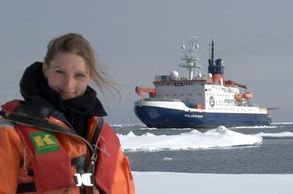
Thawing of Permafrost Expected to Cause Significant Additional Global Warming, Not yet Accounted for in Climate Predictions
Posted on 16 December 2012 by John Hartz
This is a reprint of a press release posted by the United Nations Environment Programme (UNEP) on Nov 27, 2012.
Policymakers and Climate Scientists Must Monitor and Prepare for Large Carbon Dioxide and Methane Emissions from Permafrost, Says UNEP Report
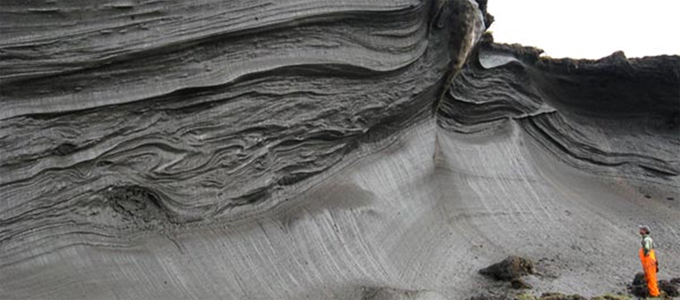
A scientist standing in front of an ice-rich permafrost exposure on the coast of Herschel Island, Yukon Territory (photo: Michael Fritz).
Permafrost covering almost a quarter of the northern hemisphere contains 1,700 gigatonnes of carbon, twice that currently in the atmosphere, and could significantly amplify global warming should thawing accelerate as expected, according to a new report released today by the UN Environment Programme (UNEP).
Doha Climate Summit Ends With No New CO2 Cuts or Funding
Posted on 15 December 2012 by John Hartz
The following article is reprinted by permission of its author, Stephen Leahy, who writes for the Inter Press Service (IPS) News Agency. To access the article as posted on the IPS website, click here.
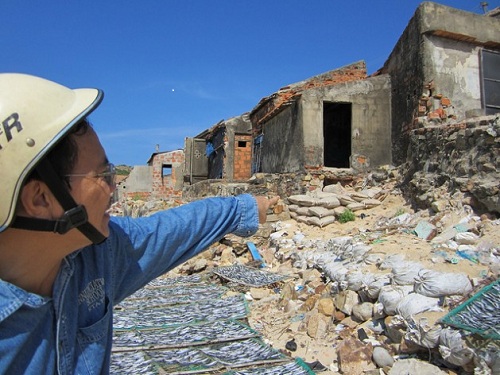
- The United Nations climate talks in Doha went a full extra 24 hours and ended without increased cuts in fossil fuel emissions and without financial commitments between 2013 and 2015.
IPCC Draft Report Leaked, Shows Global Warming is NOT Due to the Sun
Posted on 14 December 2012 by dana1981
This post has been re-published by The Guardian
Alec Rawls, an occasional guest poster on the climate contrarian blog WattsUpWithThat who signed up to review the upcoming Intergovernmental Panel on Climate Change (IPCC) Fifth Assessment Report (as anyone can), has "leaked" a draft version of the report and declared that it "contains game-changing admission of enhanced solar forcing." This assertion was then repeated by James Delingpole at The Telegraph (with some added colorful language), and probably on many other climate contrarian blogs.
If the IPCC was to report that the sun is a significant player in the current rapid global warming, that would indeed be major news, because the body of peer-reviewed scientific literature and data clearly show that the sun has made little if any contribution to the observed global warming over the past 50+ years (Figure 1).
Figure 1: Percent contributions of greenhouse gases (GHGs), sulfur dioxide (SO2), the sun, volcanoes, and El Niño Southern Oscillation (ENSO) to the observed global surface warming over the past 50-65 years according to Tett et al. 2000 (T00, dark blue), Meehl et al. 2004 (M04, red), Stone et al. 2007 (S07, green), Lean and Rind 2008 (LR08, purple), Huber and Knutti 2011 (HK11, light blue), Gillett et al. 2012 (G12, orange), and Wigley and Santer 2012 (WS12, dark green).
So why would the latest IPCC report contradict these studies when its purpose is to summarize the latest and greatest scientific research? The answer is simple — it doesn't. Rawls has completely misrepresented the IPCC report.
Cosmic Source of Confusion
The supposedly "game-changing admission" from the IPCC report is this:
This is Global Warming - A Lesson for Monckton and Co.
Posted on 13 December 2012 by dana1981
To put it as simply as possible, this is global warming:

Figure 1: Land, atmosphere, and ice heating (red), 0-700 meter OHC increase (light blue), 700-2,000 meter OHC increase (dark blue). From Nuccitelli et al. (2012).
This figure shows the amount of heat the Earth has accumulated since 1960, most of which has gone into the oceans. The amount of energy accumulating in the oceans over this timeframe is the equivalent of more than two Hiroshima "Little Boy" atomic bomb detonations per second, every second, since 1960. And this global warming shows no signs of slowing.
However, the myth that global warming has magically stopped is a pervasive one, most recently repeated during a rather silly and disruptive stunt in the middle of an important international climate negotiation.
2012 SkS Bi-Weekly News Roundup #9
Posted on 12 December 2012 by John Hartz
This is a biweekly roundup of selected news articles and blog posts about climate change and its impacts. Readers are encouraged to comment on the posted articles and to provide links to other articles of importance.
Participate in Citizen Science with the new SkS BOINC team
Posted on 12 December 2012 by Steve Brown

We've discussed in the past how the general public can make a real contribution to scientific discovery by highlighting some of the citizen science projects that you can participate in. Now is your chance to join the Skeptical Science team in participating in the grand-daddy of Internet based citizen science: the Berkeley Open Infrastructure for Network Computing, otherwise known as BOINC.
Some of the most difficult problems in science require huge amounts of computing power, such as modelling the Earth's climate, predicting weather, searching for evidence of the Higgs particle, or understanding how proteins can fold at the molecular level to aid the development of vaccines. BOINC started life as an open source grid computing framework that was developed to manage the venerable SETI@Home project at the University of California, Berkeley, where members of the public could donate some of their PC's CPU time and literally create a planet-sized virtual super-computer to look for signs of intelligent life buried in radio astronomy data. BOINC now facilitates the computation of dozens more science and computing projects for people to take part in real research at home.
AGU 2012 - Solving the Climate Problem
Posted on 11 December 2012 by dana1981
The American Geophysical Union (AGU) 2012 fall meeting was held last week, and several Skeptical Science (SkS) team members attended. We will have several blog posts from our attendees detailing their experiences at the conference.
Climate Communications
Being a climate blogger, I mainly attended sessions dealing with climate communications, in addition to a few on various climate science subjects. There were several very good communications sessions, many of which referenced SkS, particularly The Escalator and The Debunking Handbook. We learned that the most effective communication combines myth debunking and replacing previously held misconceptions with facts, while keeping the message simple to avoid the overkill backfire effect. John Cook also chaired a session on social media science communication, which included talks from Zeke Hausfather, Peter Sinclair, Michael Tobis, and Michael Mann. It was a very interesting session primarily about climate blogging, Twittering, and Facebooking.
In another session, Scott Mandia discussed the success of the Climate Science Rapid Response Team. The team has responded to the inquiries of an impressive list of media outlets. Mandia also discussed that after Climategate, climate scientists and communicators have become much more organized in effectively responding to misinformation coming from climate denialists. For example, in large part due to the well-coordinated communications to immediately put the "Climategate 2.0" emails in proper context, they had virtually no misinformative impact on the public, unlike the first set of stolen emails. This improved climate communication is very encouraging.
New research from last week 49/2012
Posted on 10 December 2012 by Ari Jokimäki
Global warming impacts many things. It's actually quite difficult to come up with things within Earth system that are not affected by global warming. In this week's papers we see that Greenland glaciers accelerate, frequency and intensity of temperature extremes change, air pollution is getting worse, Arctic sea ice amount is decreasing while Siberian snow cover is thickening, Northern Hemisphere thermal growing season is getting longer, corals are trying to expand polewards but ocean acidification doesn't let them to do that, western North America gets dry and vegetation declines, sea level rises, ...
But all this doesn't mean anything because climate has changed in the past, right? Well, also mass extinctions have happened in the past.
2012 SkS Bi-Weekly News Roundup #8
Posted on 10 December 2012 by John Hartz
This is a biweekly roundup of selected news articles and blog posts about climate change and its impacts. Readers are encouraged to comment on the posted articles and to provide links to other articles of importance.
2012 SkS Weekly Digest #49
Posted on 10 December 2012 by John Hartz
SkS Highlights
When Daniel Baily takes a break from moderating the comment threads of SkS articles and cranks out an article, the result is usually a gem. Such is the case with The Greenhouse Gas Effect All-Star Fan Club. As one reader posted, "Definitely a keeper ;) Will use this one ;)."
Rob Painting's Past 150,000 Years of Sea Level History Suggests High Rates of Future Sea Level Rise is also a "keeper" and has been reposted verbatim on Joseph Romm's Climate Progress website.
Toon of the Week
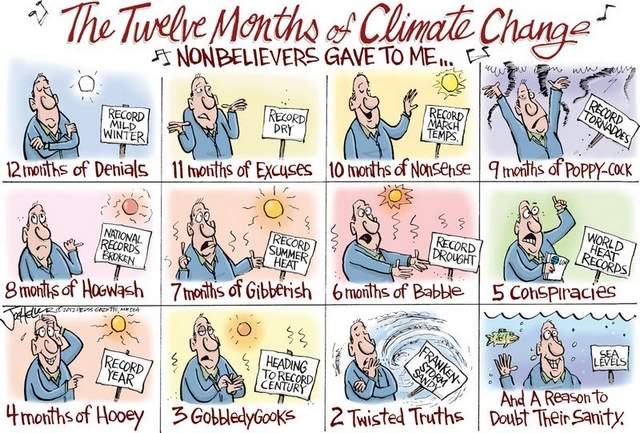
Source: Joe Heller, Green Bay Press-Gazette
Newest Yale Forum Video: A ‘Play-by-Play’ on Sandy with Kerry Emanuel
Posted on 9 December 2012 by greenman3610
This is a re-post from the Yale Forum on Climate Change & the Media.
MIT atmospheric science professor Kerry Emanuel offers a concise “play-by-play” as Superstorm Sandy forms and heads for the New Jersey shoreline in the latest Yale Forum video produced by independent film maker Peter Sinclair.
Sinclair’s catchy video captures Ohio State University professor Jason Box on the subject of Sandy’s relationship to our warming planet. Climate change, Box says, “shifted the odds in its favor” and made its impact more severe as a result of the warmer sea temperatures along the eastern seaboard … and the resulting higher sea levels resulting from those higher temperatures.
Weather Underground founder Jeff Masters and video from “Morning Joe” provide additional material in the video, with “Morning Joe” host Joe Scarborough pointing to a discussion he had recently had with a man who handles insurance rate tables. “This is going to just keep coming,” Scarborough quotes him as saying in reference to sky-high storm-related expenses.
Subcap Methane Feedbacks. Part 2: Quantifying fossil methane seepage in Alaska and the Arctic
Posted on 8 December 2012 by Andy S
The previous article in this series looked at the recent discovery of significant releases of fossil methane through the thawing permafrost in Alaska. In this second installment we will look at the potential of the rest of the Arctic to produce subcap methane, and will compare the size of these seeps to other global methane-producing mechanisms.
Pan-Arctic extrapolation
Much of the Arctic is underlain by sedimentary basins (Figure 1) that have potential to generate fossil methane gas. Onshore areas that are both gas- and permafrost-prone include Northern Alaska, Canada (Mackenzie Delta and Arctic Islands), Svalbard and Western Siberia.
In the Mackenzie Delta of Arctic Canada, for example, large gas seeps have been observed in small lakes in the delta close to large discovered gas fields. These seeps have isotope and chemistry signatures similar to local deep gas fields and to the Mallik gas hydrate accumulation, which contain fossil, thermogenic methane. Permafrost is up to 500 metres thick in this area but oil industry seismic reflection data reveal the presence of what may be gas conduits through the permafrost, from the deeper fossil gas accumulations (personal communication from the Geological Survey of Canada). It seems highly probable that similar situations will exist elsewhere in the Arctic, especially, in Siberia. Cramer and Franke (2006) show examples of gas conduits, some of them through permafrost, in the Laptev Sea (see also part four of this series, for more discussion).

Past 150,000 Years of Sea Level History Suggests High Rates of Future Sea Level Rise
Posted on 7 December 2012 by Rob Painting
- An accurately dated, near-continuous, history of sea level variations for the last 150,000 years has been compiled.
- Comparison with ice core data reveals that major global ice volume loss, as implied by sea level rise, has followed relatively quickly after polar warming. The Greenland ice sheet responding virtually straight away (0-100 years lag time), and a 400-700 lag for the Antarctic ice sheet.
- These response times are much faster than was previously commonly suspected, and implies that once sufficient polar warming is underway, future ice sheet collapse may be unavoidable.
- During all episodes of major global ice loss, sea level rise has reached rates of at least 1.2 metres per century (equivalent to 12 mm per year). This is 4 times the current rate of sea level rise.

Figure 1 - Sea level reconstruction from 150,000 years ago to the present. Relative sea level (RSL) in grey-shaded area, with RSL data in blue crosses. The downward-pointing red arrows indicates peaks in sea level rise exceeding 1.2 metres per century (12mm per year). The break in the record is due to the absence of foraminifera (upon which the reconstruction is based) as a result of excessively salty seawater during the last ice age. Adapted from Grant (2012).
DIY climate science: The Instrumental Temperature Record
Posted on 6 December 2012 by Kevin C
- Anyone can reproduce the instrumental temperature record for themselves, either by using existing software or by writing their own.
- A new browser-based tool is provided for this purpose.
- Many recent claims concerning climate change can be tested using this software.
The motto of the UK's Royal Society is "Nullius in verba", often translated as "Take nobody's word for it" with the implication that scientific views must be based in evidence, not authority. In this spirit, one way to test the claims of climate science is to do it yourself (DIY). There are only three scientific questions which need to be answered to determine whether climate change is a real issue:
- Is it warming?
- Why is it warming?
- What will happen in future?
The rest is window dressing. The first two questions can be addressed using the instrumental temperature record. The in situ record (based on thermometer readings) provides observations of air temperature over land and sea surface temperature which can be used to reconstruct a temperature record for much of the Earth's surface back to the 19th century. This gives a direct indication of whether the Earth is warming.
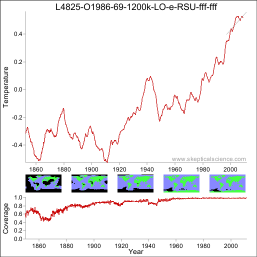
2012 SkS Bi-Weekly News Roundup #7
Posted on 6 December 2012 by John Hartz
This is a biweekly roundup of selected news articles and blog posts about climate change and its impacts. Readers are encouraged to comment on the posted articles and to provide links to other articles of importance.
2015 Climate Aid Goal
Developing states have said they will continue to push for a 2015 target for climate finance at U.N. negotiations in Doha, despite firm indications from the European Union and the United States that rich nations will not commit to a collective figure at the talks.
Developing states push 2015 climate aid goal at UN talks by Megan Knowling, Alertnet, Dec 5, 2012
Adaptation: US
For economic, recreational and aesthetic reasons, Americans have clustered on the shore. Even in stable climatic times, the coastline is dynamic, wetlands teeming with life, barrier islands shifting, all the while subject to big storms and associated floods. Increasingly, though, the climate will not be stable. Communities from lower Manhattan to the Delmarva Peninsula will have to confront that reality. Best to start now.
Holding back the sea, Editorial Board, Washington Post, Dec 1, 2012
Weighing change in Antarctica
Posted on 5 December 2012 by mattking
Guest commentary by Matt King, Michael Bentley and Pippa Whitehouse (expanded from a Real Climate posting)
Determining whether polar ice sheets are shrinking or growing, and what their contribution to changes in sea level is, has motivated polar scientists for decades. Genuine progress began in the early 1990s when satellite observations started to provide (nearly) spatially comprehensive sets of observations. Three very different, and hence complementary, approaches are now employed, although each has a particular limitation:
- Satellite altimetry: measurements of ice sheet volume changes from laser or radar altimeters (e.g. ICESat) can be converted to mass changes by accounting for the spatially- and temporally-varying surface density distribution together with spatial extrapolation to unsampled regions. The main limitation lies in the models used to correct for surface density changes.
- Input-minus-output: calculating the difference between the mass of snow accumulated and that of the ice (and meltwater) being discharged gives the mass imbalance. The snow accumulation is normally estimated from numerical models and the discharge is computed using the product of measured velocity at the edge of the ice sheet and measured or inferred ice thickness and density at this point. Thus, uncertainty in accumulation models and sub-glacial topography at the grounding line propagate into mass balance uncertainties.
- Satellite gravimetry: changes in Earth’s gravity field can be deduced from satellite data (e.g. from Gravity Recovery and Climate Experiment, GRACE) and used to determine changes in ice mass but only after accounting for mass-change effects that are not due to ice mass redistribution – in particular glacial isostatic adjustment (GIA).
The Greenhouse Gas Effect All-Star Fan Club
Posted on 5 December 2012 by Daniel Bailey
The greenhouse effect is standard physics and confirmed by observations. We only have to look to our moon for evidence of what the Earth might be like without an atmosphere that sustained the greenhouse effect. While the moon’s surface reaches 130 degrees C in direct sunlight at the equator (266 degrees F), when the sun ‘goes down’ on the moon, the temperature drops almost immediately, and plunges in several hours down to minus 110 degrees C (-166F).
Since the moon is virtually the same distance from the sun as we are, it is reasonable to ask why at night the Earth doesn’t get as cold as the moon. The answer is that, unlike the Earth, the moon has no water vapour or other greenhouse gases, because of course it has no atmosphere at all. Without our protective atmosphere and the greenhouse effect, the Earth would be as barren as our lifeless moon; without the heat trapped overnight in the atmosphere (and in the ground and oceans) our nights would be so cold that few plants or animals could survive even a single one.
The most conclusive evidence for the greenhouse effect – and the role CO2 plays – can be seen in data from the surface and from satellites. By comparing the Sun’s heat reaching the Earth with the heat leaving it, we can see that less long-wave radiation (heat) is leaving than arriving (and since the 1970s, less and less radiation is leaving the Earth, as CO2 and equivalents build up). Since all radiation is measured by its wavelength, we can also see that the frequencies being trapped in the atmosphere are the same frequencies absorbed by greenhouse gases.
Disputing that the greenhouse effect is real is to attempt to discredit centuries of science, laws of physics and direct observation. Without the greenhouse effect, we would not even be here to argue about it.
Don't believe me? Here's some testimony from the side of the "skeptics" (a veritable "baker's dozen" Who's-Who):
THE ESCALATOR

(free to republish)
The Scientific Guide to
Global Warming Skepticism
![]()

















































